The Mind Blowing Secret of The Armenian Alphabet
Source: https://www.peopleofar.com/2019/01/19/mind-blowing-secret-of-the-armenian-alphabet/
Published: January 19, 2019
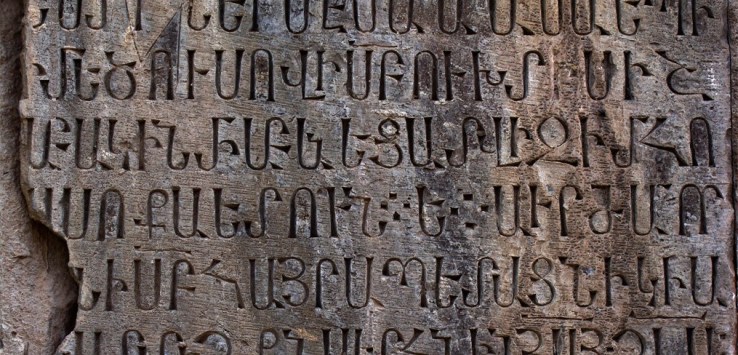
The Armenian alphabet is a true materpiece of its era and knows many secrets. However, there is one in particular that still blows my mind.
As some people know the Armenian alphabet was (re)invented in 405 AD by the Armenian linguist and theologian Mesrop Mashtots with the help of the patriarch Sahak Partev and the Armenian king Vramshapouh. For these achievements Mashtots was made a saint in the Armenian Church.
I say “(re)invented” because the medieval sources are somewhat unclear on how much the Armenian alphabet was actually a completely new invention or an updated modification of a much older (recovered) Armenian alphabet.
The Armenians after all had an ancient alphabet that was long lost by the early middle ages (for a discussion read: Tracing the oldest Armenian script). It was lost, but not forgotten in the middle ages, because the medieval authors describe that Mashtots’s initial mission was to recover and reapply the Armenian alphabet rather than to invent one from scratch.
One of Mashtots’s pupils by the name of Koryun wrote the autobiography of Mashtots known as “Varq Mashtotsi” (Life of Mashtots). He describes the mission as follows:
Unfortunately, the letters, due to their age and condition, appeared to be insufficient to be applied to the entire Armenian language. Thus it had to be updated and modified. Koryun explains this process as follows:
The solution only came by divine intervention. Koryun tells us that Mashtots set out to rearrange and re-purpose the recovered letters. He struggled a long time without success, until one day miraculously he received a vision from God who instructed him and aided in this process.
According to tradition, the first sentence to be written down in the new Armenian alphabet by Mashtots was:
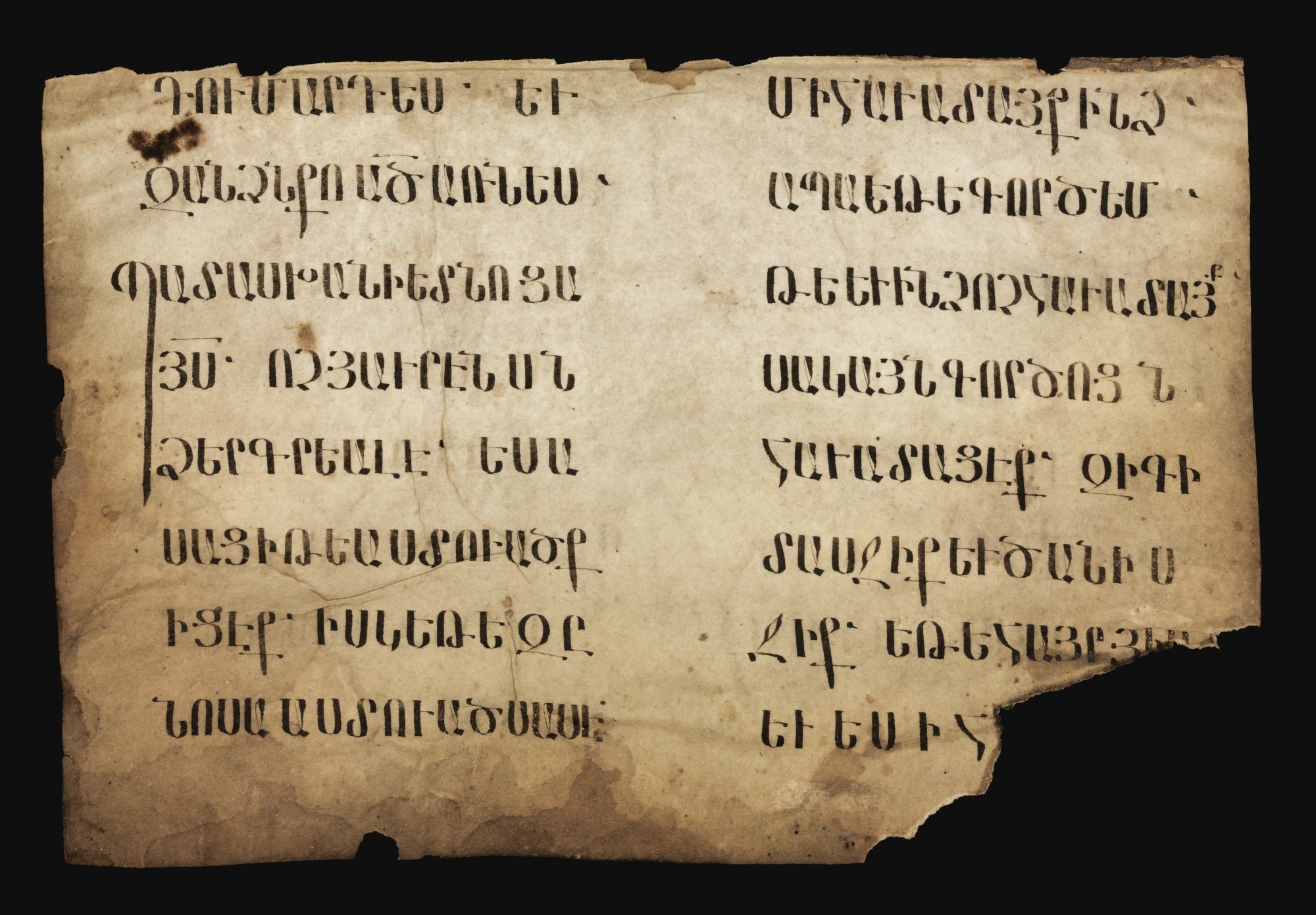 The Gospel of John, in Armenian, leaves from an extremely early Biblical codex on vellum 9th-12th c.
The Gospel of John, in Armenian, leaves from an extremely early Biblical codex on vellum 9th-12th c. Another 5th century historian Ghazar Parpetsi, who wrote History of the Armenians, reiterates Koryun on the recovery mission but only mentions that Mashtots with the help of Sahak simply rearranged (not invented) the Armenian letters.
Following primal sources, it is clear to me that the shapes of the Armenian letters (unlike their arrangement) were most likely recovered rather than invented, and that’s not a small feat by any stretch of the imagination. But that’s not the mind-blowing secret that I was going to discuss in this article.
The Armenian alphabet is not only an enigma when it comes to its creation, it also holds many astonishing hidden features. So much so that one would almost have to conclude that it was indeed either comprised by divine intervention or Mashtots together with Sahak ware linguistic geniuses far ahead of their time.
The original alphabet had thirty-six letters, with two being added later on in the 12th century to represent foreign sounds (and with one ligature apotheosized to the rank of letter). But for the sake of the argument we are going to stick with the 36 Mashtotsian letters in this post.
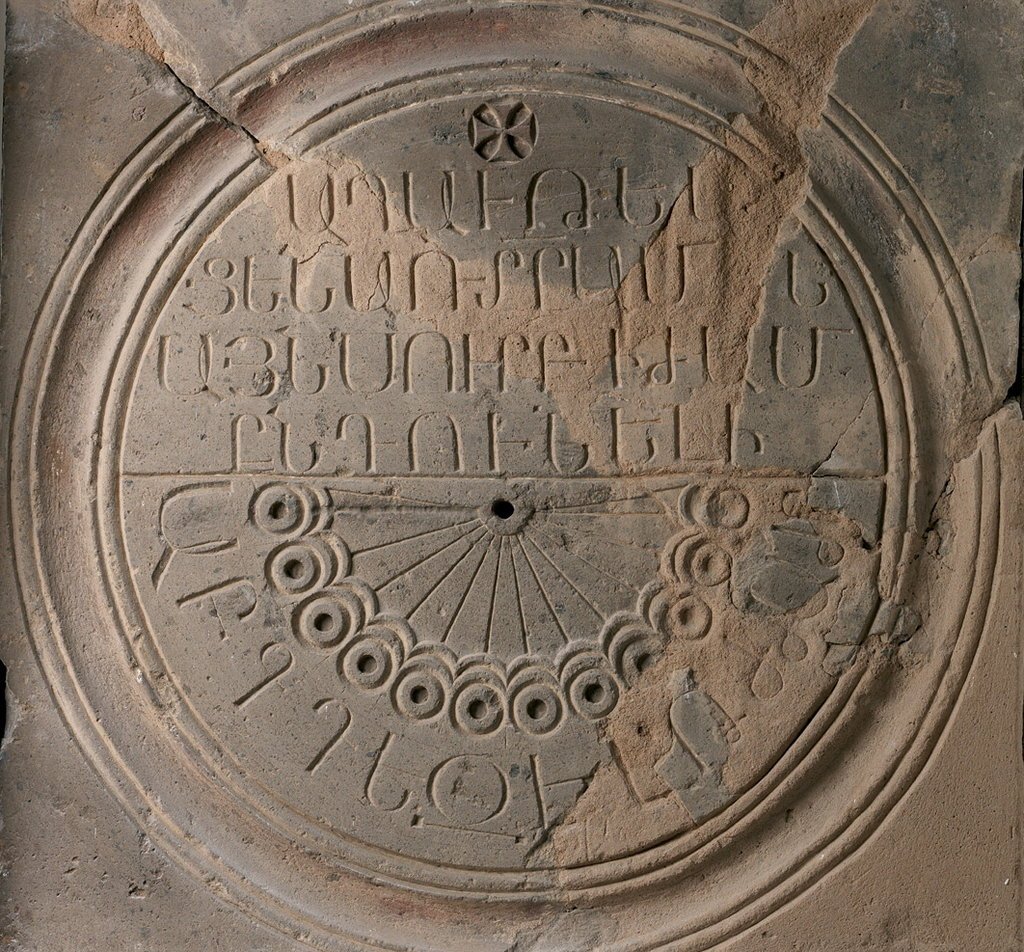 A 7th-century sundial with Armenian numbers from Zvartnots Cathedral in Echmiadzin, Armenia. Credit Zvartnots Cathedral Museum, Echmiadzin
A 7th-century sundial with Armenian numbers from Zvartnots Cathedral in Echmiadzin, Armenia. Credit Zvartnots Cathedral Museum, Echmiadzin Numbers and Dates
The Armenian alphabet was not just a writing system, it was also a numerical system used for math calculations and recording calendar dates.
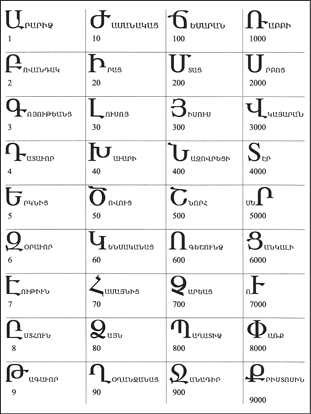
Not only do all the letters have their own numerical value based on their order in the alphabet, but they also differ in decimals. They are arranged in 4 columns and 9 rows. The first column represents single digits, the second represents tens, the third represent hundreds and the forth represents thousands.
Here is how that would work for dates. Dates were usually marked with the letters ԹՎ, often with an overline, indicating “t’vin” (meaning “in the year”) followed by one to four letters, each of which stands for a number based on its order in the alphabet.
In the Middle Ages, Armenians used a calendar that started in 552 AD (11 July) of the Julian calendar. To translate into standard years, simply add 551 to the number. Thus, should you see an inscription reading ԹՎՈՀԳ, simply check the alphabet table above and see that this equals to 600 + 70 + 3 + 551 = 1224 AD.
Sacred Geometry
In one of my first articles on PeopleOfAr I talked but the Armenian love for geometry. The Armenian alphabet is no exception in that regard. There are many geometrical secrets hidden in the alphabet of which I shall discuss a few.
For example the fist letter of the Armenian alphabet is A «Ա» and stands for “Astvats” which means God, while the last letter in the alphabet is K «Ք» which stands for “Kristos” meaning Christ.
Now, if we arrange the Armenian alphabet into an equilateral triangle, the three letters at the edges read A, K and S describing the trinity, the Father God (Astvats), Son Christ (Kristos) and the Holy Spirit (Surb Hogin) of the Christian faith.

Equilateral triangle
Similarly, if we to arrange the Armenian letters inside a square of an octagram, reading clockwise, the letters at the edges form the old native Armenian name for the country ՀԱՅՔ “Hayk”. The Armenian name of the homeland of the Armenian people.

Octagram
Prophetic Alchemy
By now you might think to yourself; “the Armenian alphabet is certainly impressive”. However, we’re not done yet. Remember the mind-blowing secret I promised? Well here it comes.
The numerical order of the Armenian letters appears to correspond with the atomic numbers of chemical elements from the periodic table for the 7 metals known in the antiquity. (sources: here and here)
The metals of antiquity are the seven metals which humans had identified and found use for in prehistoric times: gold, silver, copper, tin, lead, iron, and mercury. These seven are the metals from which the modern world was forged.
Each of the metals was associated with one of the seven then-known celestial bodies, and one of the seven days of the week.
| METAL | BODY | DAY OF WEEK |
|---|---|---|
| Gold | Sun | Sunday |
| Silver | Moon | Monday |
| Iron | Mars | Tuesday |
| Mercury | Mercury | Wednesday |
| Tin | Jupiter | Thursday |
| Copper | Venus | Friday |
| Lead | Saturn | Saturday |
The periodic table is a tabular arrangement of the chemical elements, arranged by atomic number, electron configuration, and recurring chemical properties, whose structure shows periodic trends.
The atomic number or proton number of a chemical element is the number of protons found in the nucleus of an atom. For example gold (latin: Aurum), Au in the table, has 79 protons in the nucleus of its atoms.
As discussed earlier, ever letter in the Armenian alphabet has a number attached to it. See the chart bellow:
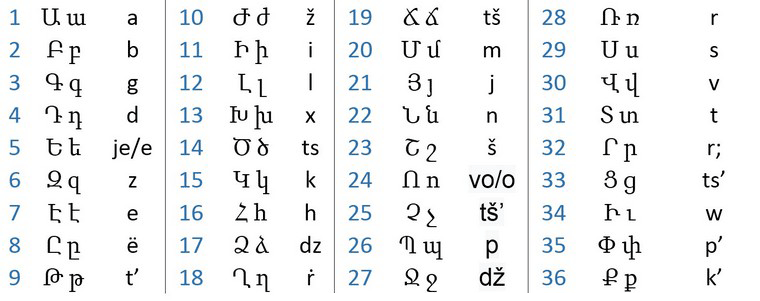 Mashtotsian Armenian alphabet with corresponding numbers.
Mashtotsian Armenian alphabet with corresponding numbers. Now, here is the interesting part. Let’s take the word “Gold” Voski in old Armenian. It is comprised of 4 letters “ՈՍԿԻ”. In alphabetical order Ո is the 24th letter, Ս is 29th, Կ is 15th and finally, Ի is 11th. If we add these numbers together 24+29+15+11=79 we get the number 79. Which is exactly the atomic number for the chemical element Au (Gold) in the periodic table.
And if you thought this was just a coincidence, think again! It applies to all of the 7 metals known in the antiquity. See the chart bellow:
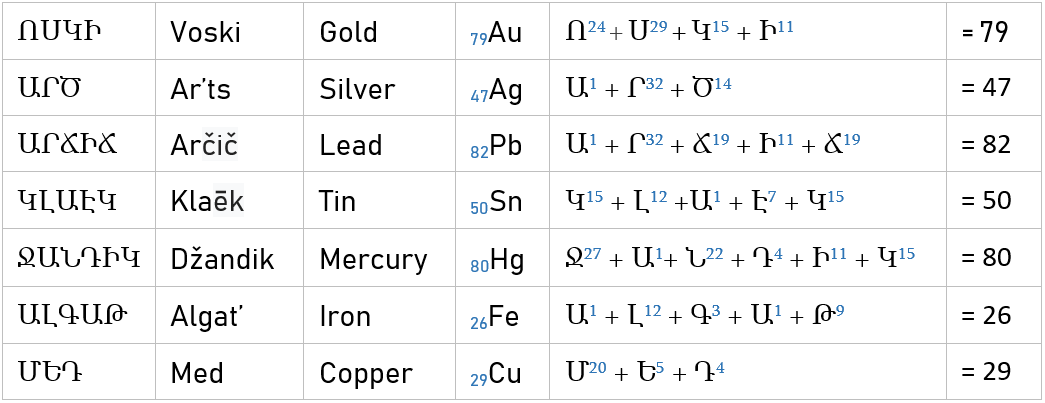 The 7 metals of antiquity and their Armenian names correspond with the atomic numbers of the periodical table
The 7 metals of antiquity and their Armenian names correspond with the atomic numbers of the periodical table Disclaimer
The astonishing part here is that the periodic table wasn’t actually known in the antiquity. It was only invented in the 19th century. That’s almost 1500 years after the (re)invention of the Armenian alphabet. So, even though the 7 elements ware known at the time Mashtots completed his work, there is no way he could have known the periodic table or the atomic structure of chemical elements. So did he actually receive a divine vision, or is there another less spiritual explanation? I for one don’t know the answer.
Regardless of how this came about, there is no doubt that the Armenian alphabet is a piece of historic art, arranged by a true visionary polymath way ahead of his time.
But he didn’t stop with the Armenian alphabet. Mashtots actually created several other alphabets including that of the Georgians and the Caucasian Albanians (Aghvank, a Christian country now occupied by Azerbaijan).
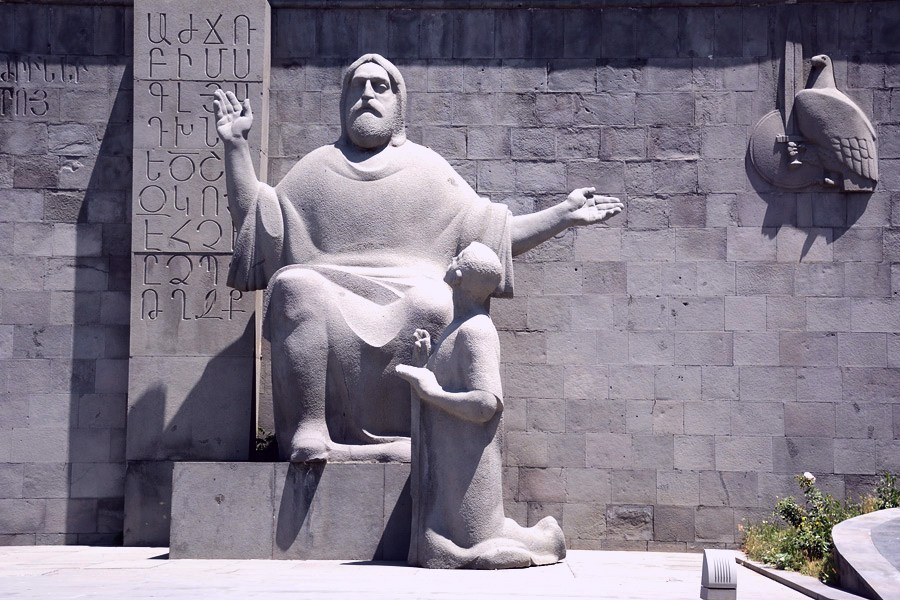
Tags: Armenia, Linguistics
This page may have a talk page?.
Access and use of this site by any means implies consent to the Agreement of Use. © Hellene Sun
